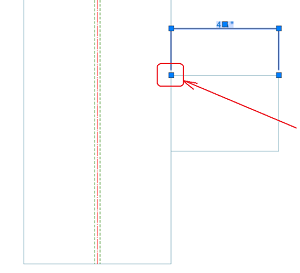Learn about the behavior of dimension points, during update, when they are created on points that belong to multiple elements.
For example, in the following image, the highlighted point belongs to two objects; it is both the plate corner and the nearest point along the beam edge:

For the beam - nearest case, the dimension that accepts that point needs to be perpendicular to that edge, so in the example, the horizontal dimension line has one of the points on two objects.
During update, the Advance Steel mechanism would not differentiate between the two objects, so internally, it would associate the point to one of the objects; if this object is the beam, then the point would jump to the edge corner point, as the Nearest snap is valid, but would not be kept as selected on the screen (during update a point created with Nearest will jump to a nearby corner along that edge).
Due to this behavior, many dimensions in this situation would:
- Have the point jumping, leading to graphical issues such as the dimension extension line overlapping visible geometry.
- Have the dimension chain moving, as a result of the point jumping. This would happen because the position of the dimension line is determined by the distance between the line and one of its lead points - so if that point would move, the chain would also move.
- Have only the dimension line moving (without the point jumping); in rare cases where the point would jump only "internally", the dimension chain would adjust to that virtual position.
Starting with Advance Steel 2019, a mechanism adds priorities to the dimension points in this situation. This means that objects that have the point on a corner or in a position that is recognized by the preferred for smart dimensions will have a higher priority against objects where that point is placed along an edge, on a "Nearest" situation. Therefore, during update, the dimension point will associate itself to the object that has the highest priority point and as a result, this type of dimensions will no longer move - the point will not jump, dimensioning remains consistent and the dimension chain remains in place in relation to the view.
